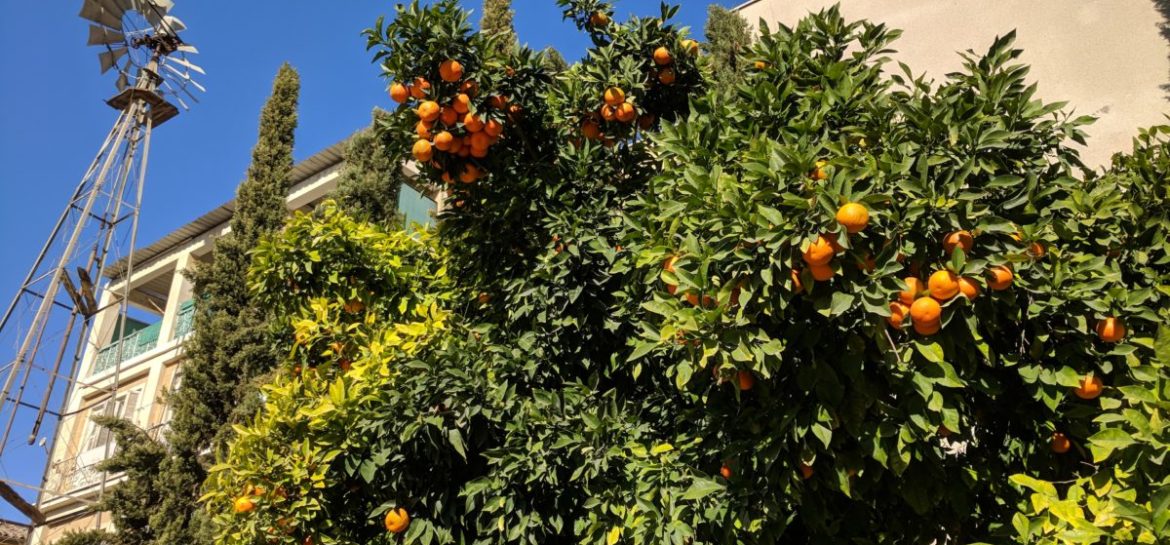
To my shame, I knew very little about the history of Cyprus before I went there earlier this month. I knew our military went there, and that British youth head there for debauched holidays, but that’s about it. When we got to Cyprus, and after my eyes had adjusted to that unusual bright thing in the sky in January, the first thing that surprised me was how British the place was. Three-pronged plugs, roundabouts, pelican crossings. Naturally our first thought was “Ahh, this is another country that Britain has ruled and then screwed over, isn’t it..?”. And we weren’t too far from the truth to be honest.
I was also aware of the Committee on Missing Persons in Cyprus. The CMP is one of the key forensic anthropological projects in the world. This excellent short film from PBS gives a little more detail on their work.
My trip to Cyprus wasn’t a jolly – despite what you may think, and what certain people on Twitter were suggesting… Dr Becky Gowland and myself were invited over by Dr Claudia Garrido-Varas (a forensic specialist for the ICRC) to help deliver some seminars on the latest developments in forensic anthropology and bioarchaeology. Each of us spoke every day. This allowed us to bring in our various interests and expertise, but also ensure that the CMP staff listening wouldn’t get too bored of us. The first day introduced the theme of Humanitarian Forensic Action and current debates in the forensic anthropological literature. Then we shifted to talking about new ways of visualising forensic evidence, and exciting developments in non-adult skeletal analysis (including the new enamel amelogenin method). Day Two focused on age-at-death methodologies, new approaches to analysing bone that has been recovered from fire or water, and finally stable isotopic analysis. The third and our final day examined the resolution of complex commingled contexts (I do love myself a bit of alliteration…) and skeletal pathology.

The staff in the lab are hugely experienced already, so we purposefully avoided talking about the basics of osteoprofiling, and instead focused on what we do best – leading research and developments in the field. When you do these sorts of sessions, it’s always hard to know how well received the content is, but I hope it hit the spot and was of use. Certainly discussions in the lab afterwards suggested that we have presented potential solutions to challenges that the team were facing.
I’m not going to go into much detail here about the history of the conflict in Cyprus. There are some timelines available online if you are interested. The team have also produced some revealing academic publications, for example:
-
Forensic Management of Artifacts in Human Identification: The Experience of the Committee on Missing Persons in Cyprus by Noly Moyssi, Maria Ktori and Uyum Vehit.
-
The Committee on Missing Persons in Cyprus (CMP) is a bicommunal body established in 1981 that aims to recover, identify, and return remains to the families of 2001 missing persons from events that occurred between 1963 and 1964 and in 1974. At the time of the writing of this article, the remains of 1061 individuals have been exhumed, and 625 have been identified. This article presents a system for forensic management and artifact collection during the identification of missing persons, the usefulness of the information that is provided by artifacts, and the impact that artifacts have on families when artifacts are released to the families with the remains. The CMP experience indicates that proper forensic management plays an important role in the identification process and contributes to bicommunal stability in Cyprus.
and this one, which I use in my lectures on the application of population-level data in the interpretation of forensic contexts of death and violence:
-
Burial Patterns during Times of Armed Conflict in Cyprus in the 1960s and 1970s by Maria Mikellide.
-
The island of Cyprus experienced two periods of intercommunal conflict during which c. 2000 individuals went missing. The Committee on Missing Persons in Cyprus began a program of exhumations in 2005, through which more than 185 burial sites pertaining to the two periods of conflict have been identified and excavated. The aim of this study was twofold: (i) to present a classification of the main types of clandestine burial and (ii) to test the hypothesis that the nature of conflict influences the mode of interment. Burials can be divided into “public burials” and “concealed burials,” based on the possible motives of those involved in the interment and then subdivided into smaller categories based on similarities in archeological context. A comparison of results from the two periods of conflict reveals that there are statistical differences (p < 0.005), which indicate that the mode of interment may reflect the nature, character, and atmosphere of conflict.
The CMP anthropology lab itself is situated in the middle of the UN Buffer Zone. The lab has all the facilities that you need for this sort of work, including space for the forensic geneticists and a viewing room for the family members. The lab has two wings, which historically were used to ensure that the Greek and Turkish Cypriot staff could work separately, although now the teams are mixed. Classic anthropology charts line the walls for easy reference, books are stacked on desks and shelves, and tables occupy the remaining space. Case work is carefully laid out on each table, while the staff meticulously analyse and reassociate the remains – or from what I saw, fragments of bones.
The buffer zone is a strange place. Heavily guarded by the UN and with military stations throughout its actually a snapshot to the 1960’s. Buildings which were in active use before the zone was established, stand in hollowed-out ruin.
Everyone we met was so nice and welcoming – they were an absolute delight. But the team there has much work to do, and hopefully we’ll be able to make some small contribution to this important work.